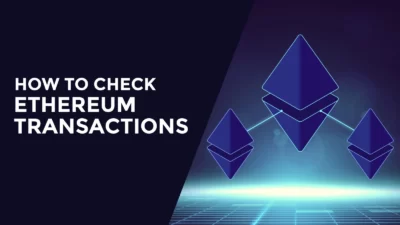Table of Contents
Toggle- What is Ethereum 2.0?
- How Ethereum 2.0 is different from Ethereum 1.0?
- What Changes Will Ethereum 2.0 Bring?
- When is Ethereum 2.0 happening?
- What are the distinctions between proof of stake and proof of work?
- Impacts of Ethereum Move from Mining to Staking
- How much energy will Ethereum 2.0 save?
- Frequently Asked Question
- Takeaway
Ethereum 2.0 is a massive upgrade to the original Ethereum network, and it promises to bring about a new era of blockchain innovation. We will also discuss the features that make Ethereum 2.0 so special, and we will take a look at some of the projects that are already being built on top of it. Let’s take a look at Ethereum 2.0 and what it means for the future of smart contracts and decentralized apps.

What is Ethereum 2.0?
Ethereum 2.0 is a major Ethereum network upgrade that is currently in development. Ethereum 2.0 includes many major changes, such as a new proof-of-stake consensus algorithm, sharding, and eWasm. Ethereum 2.0 is intended to address many of the scalability issues that Ethereum, Bitcoin, and other cryptocurrencies currently face. When Ethereum 2.0 is complete, it is expected to be able to process hundreds of thousands of transactions per second. Ethereum 2.0 is still in development and is currently in the launch phase.
How Ethereum 2.0 is different from Ethereum 1.0?
Ethereum 2.0 is a significant upgrade from the Ethereum 1.0 protocol. The primary difference is that Ethereum 2.0 uses a Proof-of-Stake (PoS) consensus algorithm instead of the Proof-of-Work (PoW) consensus algorithm used by Ethereum 1.0. PoS is more energy efficient and allows for greater scalability than PoW. In addition, Ethereum 2.0 introduces sharding, which further improves scalability by distributing transaction processing across multiple nodes. Ethereum 2.0 also features improvements to smart contract security and privacy. Taken together, these changes make Ethereum 2.0 a more attractive platform for developers and users alike.
What Changes Will Ethereum 2.0 Bring?
Ethereum 2.0, also known as Serenity, is a planned upgrade to the Ethereum network that is designed to improve its scalability, security, and sustainability. Under PoW, miners compete against each other to validate new blocks of transactions, and the one who solves the puzzle first is rewarded with ETH. However, this process is energy-intensive and often leads to centralization as large mining pools can amass enough computational power to stay ahead of the competition.
PoS used by Ethereum 2.0, on the other hand, does not require miners to solve complex puzzles. Instead, they can validate new blocks by staking ETH. This means that they will only be able to earn rewards if they act in good faith and do not try to game the system. As a result, PoS is seen as a more environmentally friendly and decentralized alternative to PoW.
In addition to switching to PoS, Ethereum 2.0 will also introduce sharding, which is a technique for horizontal scaling. Under sharding, the Ethereum network would be divided into multiple shards, each of which would process a portion of transactions. This would enable the network to handle more transactions without sacrificing decentralization or security. Ultimately, Ethereum 2.0 is expected to bring major improvements to the Ethereum network and position it as a leading platform for decentralized applications (dApps).
When is Ethereum 2.0 happening?
Ethereum 2.0 is a highly anticipated upgrade to the Ethereum network that has been in the works for several years. The upgrade is designed to improve scalability, security, and efficiency, and it is being implemented in phases.
Beacon Chain
One of the most anticipated features of Ethereum 2.0 is the launch of the Beacon Chain. The Beacon Chain is a new type of blockchain that will be used to manage the overall Ethereum network. It is designed to be more scalable and efficient than the current Ethereum blockchain, and it is also being developed to support new features such as sharding and staking. The Beacon Chain was expected launched in 2020, and it was a key part of the overall Ethereum 2.0 upgrade.
The Merge
The second phase, called “the Merge,” is expected in September 2022. Merge is a proposed protocol upgrade for Ethereum that would allow it to scale horizontally. It would allow multiple Ethereum blockchains to be run in parallel, with each chain having its transaction history. Transactions could be executed on any of the chains, and the results would be merged back into the main chain.

This would greatly improve Ethereum’s scalability, as transactions could be processed on multiple chains simultaneously.
Shard chains
Sharding is the process of breaking down the whole Ethereum network into several pieces, known as shards. Each shard would be a collection of its independent states, meaning that each shard’s set of account balances and smart contracts are distinct from one another.
Proof of Stake
PoS is a type of algorithm that is used by cryptocurrencies to achieve consensus. PoS allows users to stake their coins to validate transactions and secure the network. In return for staking their coins, users are rewarded with additional coins. PoS is generally seen as a more energy-efficient and environmentally friendly algorithm, as it doesn’t require expensive mining hardware or large amounts of electricity. Additionally, PoS tends to be more centralized, as the largest stakes have a greater influence over the network.
What are the distinctions between proof of stake and proof of work?
Poof of Stake (PoS) and Proof of Work (PoW) are two popular Consensus Algorithms used by Blockchain networks to achieve distributed consensus. PoS was introduced as an alternative to PoW, to be more energy efficient and environmentally friendly. PoS does not require miners to compete for rewards, instead, node operators are chosen randomly to validate transactions and create new blocks. PoW is a more established consensus algorithm that requires miners to use their computational power to solve complex mathematical problems to validate transactions and add new blocks to the chain. PoW is more energy-intensive than PoS but is widely considered to be more insecure.
Impacts of Ethereum Move from Mining to Staking
For the Ethereum team, the shift from a proof-of-work (PoW) consensus algorithm to a proof-of-stake (PoS) algorithm is a move that will shore up the network’s security while making it more environmentally friendly. However, this transition comes with its own set of challenges, particularly for miners who have invested significant time and resources into their PoW operations.
For miners, the most obvious impact will be a loss of revenue. With PoS, there is no block reward to be earned, so miners will have to find other ways to monetize their operations. Some may choose to switch to alternative cryptocurrencies that are still based on PoW, but this could prove to be a risky bet in the long run. Others may decide to simply exit the market altogether.
The reduction in mining activity could also lead to increased centralization on the Ethereum network. As fewer miners compete for rewards, those who do continue mining will likely have a greater influence over the network. This could jeopardize Ethereum’s decentralized ethos and make it more vulnerable to 51% attacks.
The shift from PoW to PoS could also have implications for Ethereum’s price. Since mining requires significant amounts of energy and computing power, it puts upward pressure on ETH’s price. With staking, however, users can earn rewards simply by holding ETH in their wallets, which may result in less demand for the cryptocurrency and put downward pressure on its price.
Ethereum’s move to staking is a major change for the network that comes with both risks and opportunities. Miners will need to adapt their operations to stay profitable, but doing so could open up new doors for them in terms of earnings and centralization. Similarly, investors will need to closely monitor ETH’s price as staking becomes more prevalent, as it could have an impact on demand for the cryptocurrency before they buy cryptocurrency.
How much energy will Ethereum 2.0 save?
One of the key benefits of Ethereum 2.0 is that it is designed to be more energy efficient than the current Ethereum network. Ethereum 2.0 algorithm called proof of stake, requires far less energy than proof of work, the algorithm used by the current Ethereum network. In addition, Ethereum 2.0 will use sharding, which will further reduce the amount of energy required to process transactions. Estimates vary, but it is generally agreed that Ethereum 2.0 will require significantly less energy than the current network. As a result, the switch to Ethereum 2.0 could have a significant impact on the environment, reducing the carbon footprint of the Ethereum network by a large margin.
Frequently Asked Question
Will Ethereum 2.0 replace Ethereum?
No, Ethereum 2.0 will not replace Ethereum. The two platforms are designed to merge, with Ethereum 2.0 serving as a complementary platform that improves upon certain aspects of the original Ethereum network. In particular, ETH 2.0 is designed to address scalability issues through sharding and improved user experience through increased speed and efficiency.
What happens to my ETH when 2.0 comes out?
There has been a lot of speculation and anticipation around Ethereum 2.0. Some people are concerned about what will happen to their ETH when 2.0 comes out, but there is no need to worry. Your ETH will still be safe and accessible on the new Ethereum blockchain. There may be some changes in how you use and interact with your ETH, but overall the transition should be seamless. One big change that will come with 2.0 is the merger of ETH, ETC chains.
When can I sell Ethereum 2?
You should be able to sell Ethereum 2 soon after its complete launch. There has been a recent spike in demand for the currency, so the price is likely going to continue to rise in the initial weeks. For now, if you want to sell ETH you can simply convert it into USDT and then sell Tether in Dubai for cash.
Should I stake my ETH for ETH2?
As with any investment decision, there are risks and rewards to consider. Generally speaking, staking your ETH for ETH2 may offer greater potential rewards than simply holding on to your ETH or investing in other assets. However, there is always the risk that the price of ETH could drop sharply, which would offset any rewards you may earn from staking. Ultimately, the decision of whether or not to stake your ETH for ETH should come down to your personal investment strategy and risk tolerance.
Will ETH 2.0 reduce gas fees?
Yes, ETH 2.0 will reduce gas fees. The switch to a Proof of Stake algorithm will require far less gas than the current Proof of Work algorithm. In addition, the move to a sharding protocol will also reduce the amount of gas required for transactions.
Takeaway
The Ethereum 2.0 update will improve the scalability, security, and decentralization of the Ethereum network. Additionally, it will enable new features such as sharding and staking. Until the launch, there is still a lot of work to be done to prepare for the upgrade. Developers are currently working on implementing the new software into the existing infrastructure. Ethereum holders will need to participate in a “proof of stake” process called staking to validate transactions and earn rewards on the network.







